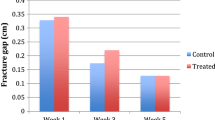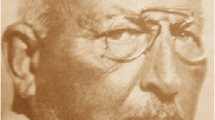Summary
Since transmission of HIV through allogenic bone grafts has been established, the concept of cryopreservation of allogenic bone had to be reconsidered. The strict guidlines of the scientific board of the Bundesärztekammer of 1990 are very labour-, time- and money-intensive. We have therefore moved to autoclaving allogenic cancellous bone. This is harvested from femoral heads during THR in slices of 2 to 3 mm, then cleaned under non-sterile conditions with a hard water jet followed by an ultrasonic bath for approx. 20 minutes. The slices are then double sealed individually and autoclaved at a temperature of 134 °C and a pressure of 2.5 atmospheres. Storage is in sealable containers at room temperature, so the material available at any time. Since the bone tissue has been freed of most organic matter and therefore lost its bone-specific antigenic structure, all that is left is the anorganic component with its inimitable architecture. This treatment results in a cancellous bone graft which is sterile, biocompatible and osteoconductive. Biologically it is inferior to autogenic and cryopreserved bone. Experimental and clinical studies show, however, that autoclaved cancellous bone can be a suitable substitute in well-selected indications. To elucidate the ultrastructural changes of the spongiosa and proteins induced by autoclaving further investigations are necessary. For example, the specific proteins involved need to be determined.
Zusammenfassung
Seit Bekanntwerden der Übertragbarkeit von HIV durch allogene Knochentransplantation, mußte das Konzept der Kryokonservierung von allogenem Knochen neu überdacht werden. Da eine strikte Erfüllung der Richtlinien, die der Wissenschaftliche Beirat der Bundesärztekammer 1990 aufgestellt hat, außerordentlich personal-, kosten- und zeitaufwendig ist, sind wir auf die Autoklavierung von allogener Spongiosa ausgewichen. Sie wird bei der Totalendoprothesenoperation aus den Hüftköpfen in 2–3 mm dicken Scheiben gewonnen, unsteril einem harten Wasserstrahl ausgesetzt und anschließend noch ca. 20 min im Ultraschallbad gereinigt. Die Spongiosascheiben werden einzeln doppelt eingeschweißt und bei + 134 °C und 2,5 bar autoklaviert. Die Lagerung erfolgt in einem verschließbaren Behälter bei Raumtemperatur in einem abgeschlossenen Schrank. Sie ist so jederzeit verfügbar. Da das Knochengewebe von organischen Bestandteilen weitgehend befreit ist und durch Autoklavierung die knochenspezifischen Antigenstrukturen verloren gegangen sind, liegt im wesentlichen noch die anorganische Komponente mit seiner unnachahmlichen Architektur vor. Die so behandelte Spongiosa ist steril, biokompatibel und osteokonduktiv. Biologisch ist sie der autogenen und der kryokonservierten allogenen Spongiosa aber eindeutig unterlegen. Experimentelle und klinische Erfahrungen zeigen jedoch, daß autoklavierte Spongiosa trotzdem als Ersatz von Knochengewebe bei gut ausgewählten Indikationen zum Einsatz kommen kann. Zur weiteren Klärung der ultrastrukturellen Veränderungen der Spongiosaarchitektur und der Proteine während des Autoklavierungsprozesses sind weitere Untersuchungen z. B. qualitative Peptidmessungen sinnvoll.
Similar content being viewed by others
Author information
Authors and Affiliations
Rights and permissions
About this article
Cite this article
Kuner, E., Schlickewei, W., Huber-Lang, M. et al. The use of autoclaved cancellous bone. Unfallchirurg 101, 870–876 (1998). https://doi.org/10.1007/s001130050353
Published:
Issue Date:
DOI: https://doi.org/10.1007/s001130050353




